NCERT Solution: Motion
(i) A body is said to be in uniform acceleration if it travels in a straight line and its velocity increases or decreases by equal amounts in equal intervals of time.
(ii) A body is said to be in nonuniform acceleration if the rate of change of its velocity is not constant.
Initial speed of the bus, u= 80 km/h = 80 x 5/18 m/s = 22.22 m/s
Final speed of the bus, v= 60 km/h = 60 x 5/18 m/s=16.66 m/s
Time take to decrease the speed, t= 5 s
![]()
Here, the negative sign of acceleration indicates that the velocity of the car
is decreasing.
Initial velocity of the train, u= 0 (since the train is initially at rest)
Final velocity of the train, v= 40 km/h = 40 x 5/ 18 m/s = 11.11 m/s
Time taken, t = 10 min = 10 x 60 = 600 s
![]()
Hence, the acceleration of the train is 0.0185 m/s2.
Graph of uniform motion
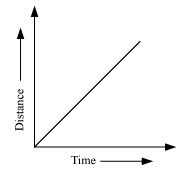
When the motion is non uniform, the distance time graph is not a straight line.It can be any curve.
Graph of non uniform motion
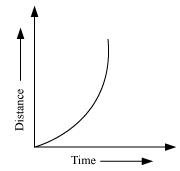
When an object is at rest, its distance - 'time graph is a straight line
parallel to the time axis.
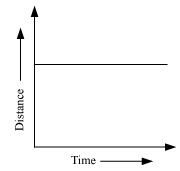
A straight line parallel to the x-axis in a distance - '-time graph indicates
that with a change in time, there is no change in the position of the object.
Thus, the object is at rest.
If speed time graph is a straight line parallel to the time axis, the object is moving uniformly.
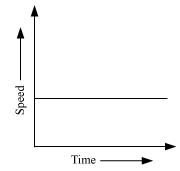
A straight line parallel to the time axis in a speed - 'time graph indicates that with a change in time, there is no change in the speed of the object. This indicates the uniform motion of the object.
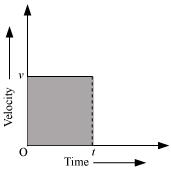
Initial speed of the bus, u= 0
Acceleration, a = 0.1 m/s2
Time taken, t = 2 minutes = 120 s
v= u + at
v= 0 + 0.1 × 120
v= 12 ms–1
(b) According to the third equation of motion:
v2 – u2= 2as
Where, s is the distance covered by the bus
(12)2 – (0)2= 2(0.1) s
s = 720 m
Speed acquired by the bus is 12 m/s.
Distance travelled by the bus is 720 m.